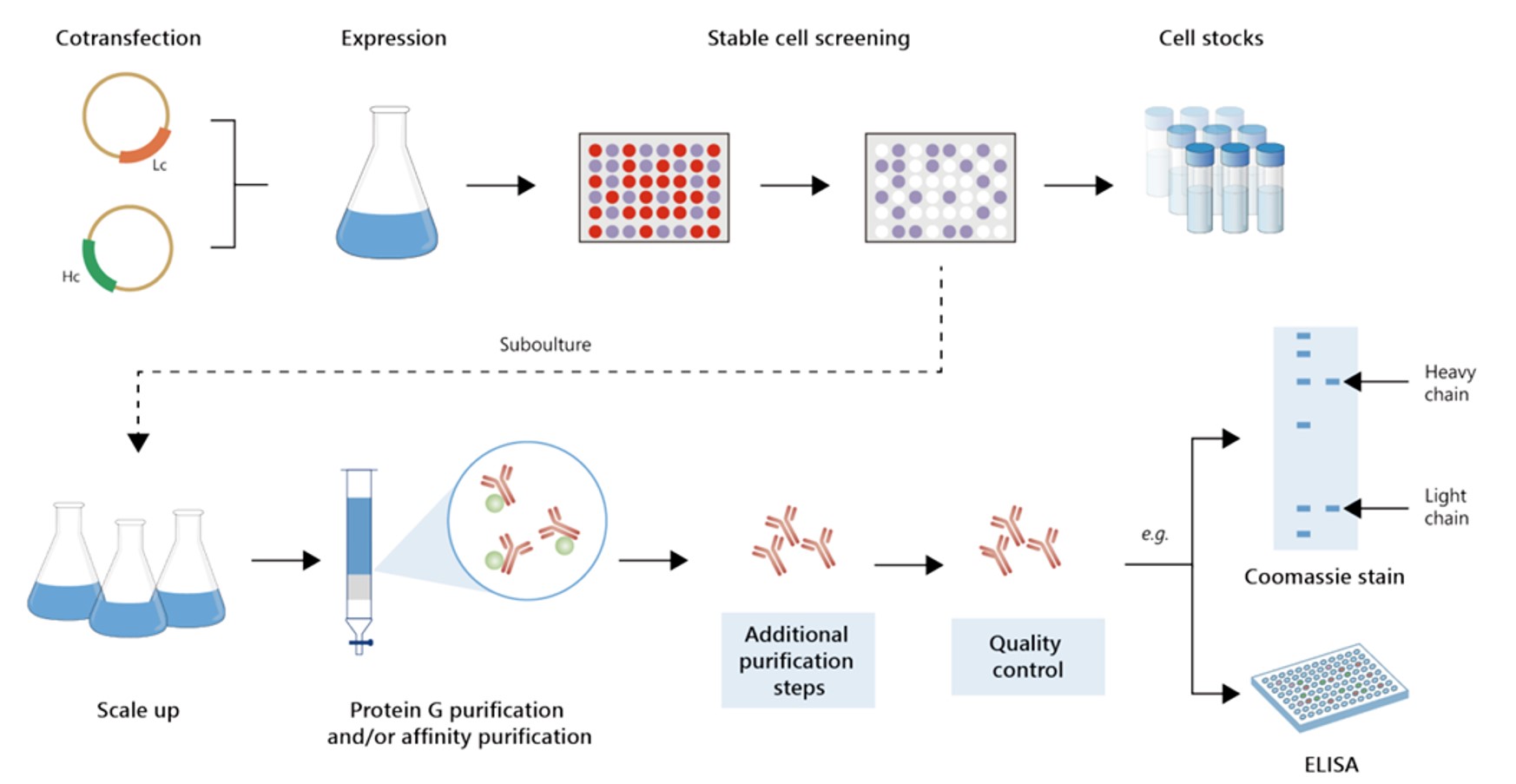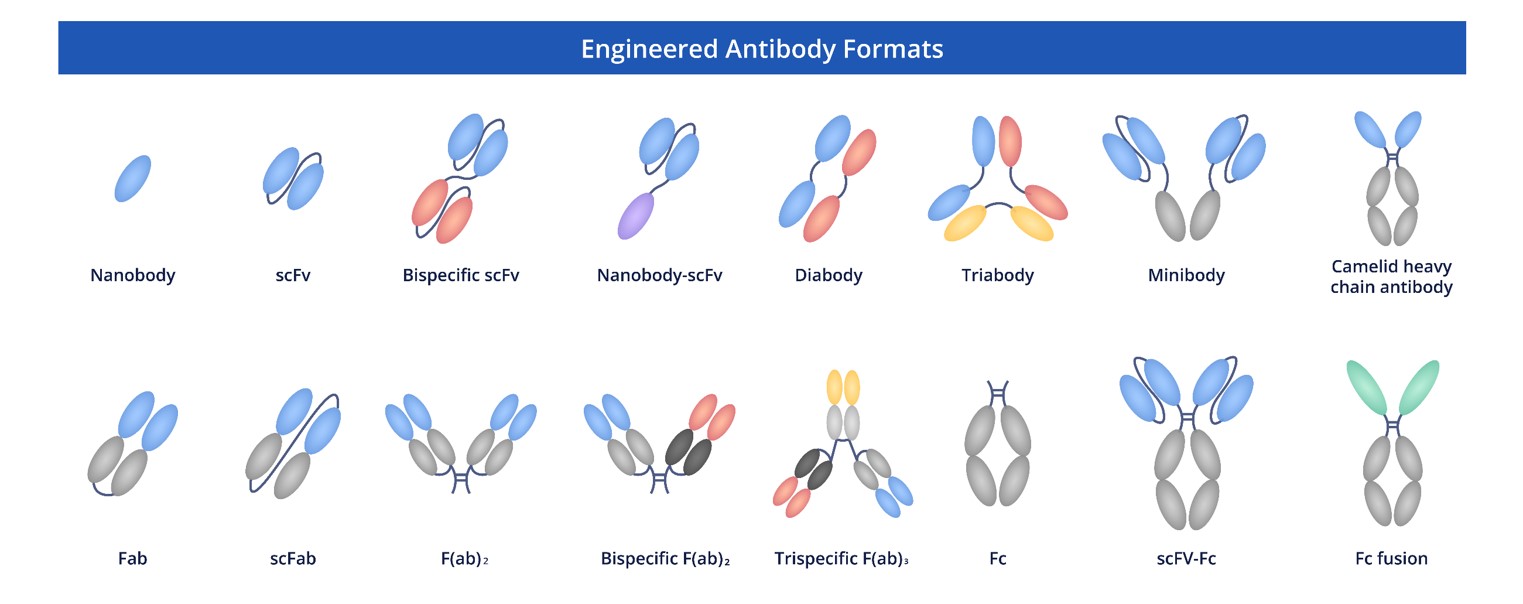 Loading...
Loading...

Anti-DHCR7 Recombinant Antibody Products
 Loading...
Loading...Anti-DHCR7 Products
-
- Species Reactivity: Human
- Type: Mouse IgG
- Application: WB, IHC, ICC, IP
- Mouse Anti-DHCR7 Recombinant Antibody (VS-0224-XY34) (VS-0224-XY34)
-
- Species Reactivity: Human
- Type: Mouse IgG
- Application: WB, IP, IHC, ICC
- Recombinant Anti-Human DHCR7 Antibody Fab Fragment (MOB-3962z-F(E))
-
- Derivation: Mouse
- Species Reactivity: Human
- Type: Fab
- Application: ELISA, FacS, FuncS
- Recombinant Anti-Human DHCR7 Antibody scFv Fragment (MOB-3962z-S(P))
-
- Derivation: Mouse
- Species Reactivity: Human
- Type: scFv
- Application: ELISA, WB, IF, FuncS
-
- Species Reactivity: Human
- Target: DHCR7
- Host Animal: Mouse
- Application: ELISA, FC, Cell-uptake
Can't find the products you're looking for? Try to filter in the left sidebar.Filter By Tag
Our customer service representatives are available 24 hours a day, from Monday to Sunday. Contact Us
For Research Use Only. Not For Clinical Use.
Creative Biolabs specializes in developing premium DHCR7-targeting antibodies through advanced recombinant technologies, designed to meet rigorous quality benchmarks for biomedical research. Our optimized production platform delivers consistent, high-performance reagents with exceptional specificity, supported by comprehensive scientific consultation from experimental design to data analysis. Researchers benefit from our expanding catalog of validated antibody formulations, each offering reliable reproducibility across diverse applications. Beyond products, we provide tailored partnership solutions to address complex challenges, combining technical expertise with flexible customization options to accelerate your research timeline while maintaining cost-effectiveness.
DHCR7: A Key Regulator in Cholesterol Metabolism Linking Neurodevelopment Cancer and Immunity
DHCR7 serves as the terminal enzyme in cholesterol biosynthesis, with its dysfunction implicated in multiple pathological conditions. In Smith-Lemli-Opitz syndrome (SLOS), deficient activity leads to toxic sterol precursor accumulation, causing severe developmental abnormalities, cognitive impairment, and organ malformations. The enzyme's role in maintaining membrane integrity connects it to neurodegenerative disorders, where altered cholesterol homeostasis exacerbates amyloid plaque formation in Alzheimer's disease and synaptic dysfunction in Huntington's disease. Oncological studies reveal its overexpression in prostate and breast cancers, promoting tumor survival through enhanced membrane rigidity and resistance to chemotherapy. Cardiovascular research demonstrates that reduced activity contributes to endothelial dysfunction by impairing lipid raft formation critical for vascular signaling. Emerging evidence links dysregulation to immune disorders, particularly autoimmune conditions where cholesterol metabolism modulates T-cell activation thresholds. Therapeutically, modulation presents opportunities for treating SLOS through substrate reduction therapy, while inhibitors are being explored as adjuvants to sensitize chemoresistant tumors. Its position at the intersection of metabolic and structural pathways makes it a unique target for conditions where cholesterol imbalance drives pathogenesis, with potential applications spanning neurodevelopmental disorders, oncology, and cardiovascular diseases. Small molecule regulators and gene therapy approaches currently under investigation highlight its translational relevance across diverse medical fields.
Alternative Names
Complement DHCR7; Putative Sterol Reductase SR-2; 7-Dehydrocholesterol Reductase; SLOS; Delta-7-Dehydrocholesterol Reductase; Sterol Delta-7-Reductase; Smith-Lemli-Opitz Syndrome; 7-DHC Reductase; D7SR; Sterol Delta(7)-Reductase; EC 1.3.1
Background
This gene encodes an enzyme that removes the C(7-8) double bond in the B ring of sterols and catalyzes the conversion of 7-dehydrocholesterol to cholesterol. This gene is ubiquitously expressed and its transmembrane protein localizes to the endoplasmic reticulum membrane and nuclear outer membrane. Mutations in this gene cause Smith-Lemli-Opitz syndrome (SLOS); a syndrome that is metabolically characterized by reduced serum cholesterol levels and elevated serum 7-dehydrocholesterol levels and phenotypically characterized by cognitive disability, facial dysmorphism, syndactyly of second and third toes, and holoprosencephaly in severe cases to minimal physical abnormalities and near-normal intelligence in mild cases. Alternative splicing results in multiple transcript variants that encode the same protein.
Disease related genes, Enzymes, Human disease related genes, Metabolic proteins, Potential drug targets
Membrane
Cell type enhanced (Hepatocytes, Theca cells, Granulosa cells, Basal respiratory cells)
Low immune cell specificity
Low cell line specificity
Interacts with DHCR24; this interaction regulates DHCR7 activity.
Oxidoreductase
Anti-DHCR7 rAb Products
To accelerate breakthroughs in cholesterol-related research, we provide rigorously validated anti-DHCR7 recombinant antibodies that combine exceptional batch-to-batch consistency with cost-efficient pricing. Our specialized scientific team offers comprehensive experimental support, from protocol optimization to data interpretation, ensuring reliable results for your specific application needs.
Table 1. Featured anti-DHCR7 recombinant antibody products at Creative Biolabs.
| Cat. No. | Product Name | Target Species | Host Species | Applications |
| MOB-3962z | Mouse Anti-DHCR7 Recombinant Antibody (MOB-3962z) | Human | Mouse | WB; IHC; ICC; IP |
| VS-0224-XY34 | Mouse Anti-DHCR7 Recombinant Antibody (VS-0224-XY34) | Human | Mouse | WB; IP; IHC; ICC |
Customer Reviews

Mouse Anti-DHCR7 Recombinant Antibody (MOB-3962z) (CAT#: MOB-3962z)

Mouse Anti-DHCR7 Recombinant Antibody (VS-0224-XY34) (CAT#: VS-0224-XY34)
rAb Production
With extensive experience in antibody engineering and development, we consistently produce high-performance recombinant antibodies through optimized manufacturing processes that ensure both exceptional reliability and accelerated delivery timelines. Our quality-driven approach combines stringent validation protocols with responsive customer support to meet diverse research requirements efficiently.
Featured Anti-DHCR7 Recombinant Antibody Production Platforms
Fig.1 Milligram-scale recombinant antibody production.
 Fig.2 Gram-scale recombinant antibody production.
Fig.2 Gram-scale recombinant antibody production.
rAb Modalities
Creative Biolabs specializes in developing premium recombinant antibody solutions through advanced engineering platforms, offering diverse formats to address complex research challenges. Our expertise spans multiple antibody optimization techniques, supported by fully customizable development services designed to meet precise experimental requirements with rigorous quality assurance.
 Fig.3 Full Length Anti-DHCR7 Recombinant Antibody Production and Modalities.
Fig.3 Full Length Anti-DHCR7 Recombinant Antibody Production and Modalities.
For detailed technical specifications about DHCR7 or personalized guidance on incorporating our antibodies into your experimental workflow, please contact our scientific support team by phone or email. Our specialists provide end-to-end assistance—from antibody selection and protocol optimization to troubleshooting unexpected results—ensuring your cholesterol-related studies maintain rigorous standards. We welcome opportunities to discuss your specific research objectives and will collaborate to develop tailored solutions that address both immediate needs and long-term project goals.



